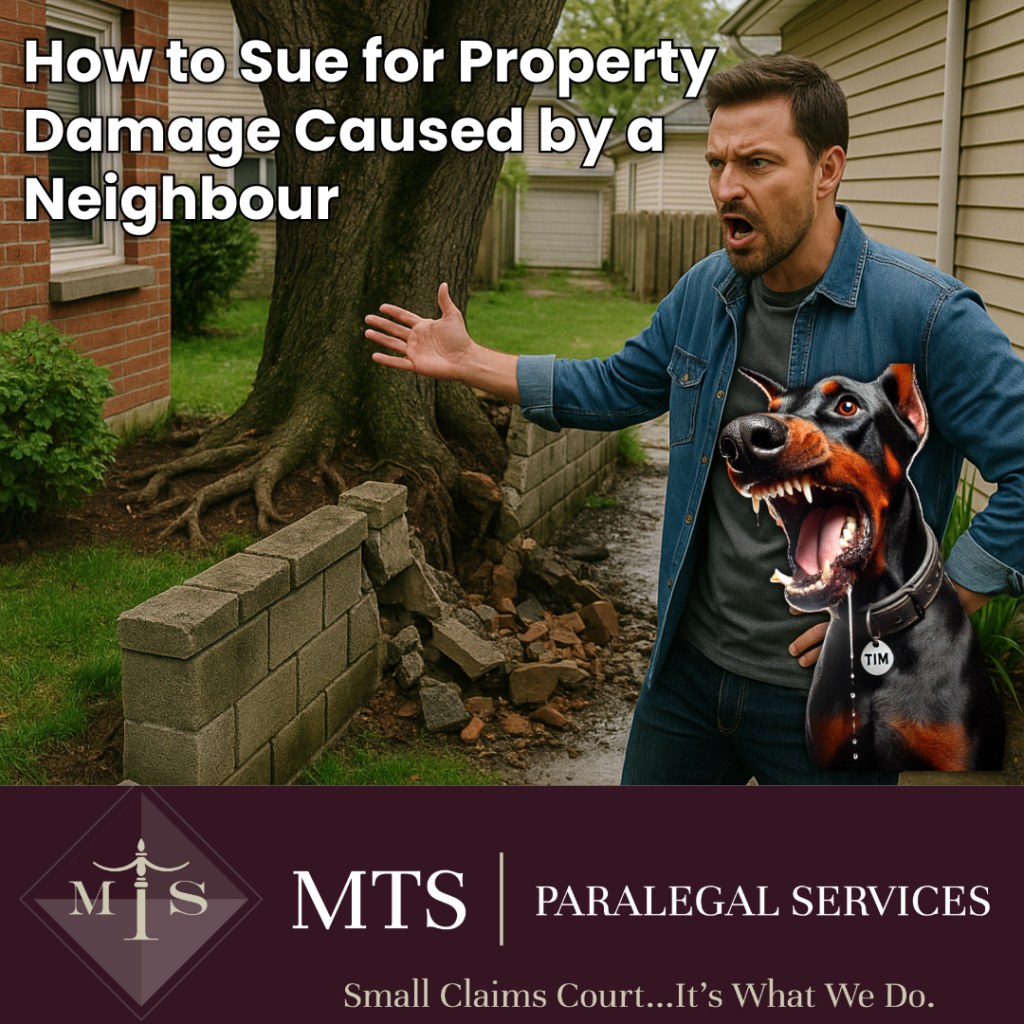
How to Sue for Property Damage Caused by a Neighbour
Property damage resulting from the actions or negligence of a neighbour is an increasingly common issue in Ontario. Whether it stems from overgrown tree roots, negligent construction, water runoff, or intentional harm, you may be legally entitled to compensation. As a property owner or tenant, it is crucial to understand your rights and the procedural steps necessary to initiate a civil claim for damages. Tim at MTS Paralegal Services offers professional guidance for such legal matters and can assist you in taking the proper legal action.
Understanding Property Damage and Legal Liability
Under Ontario law, individuals are entitled to the peaceful enjoyment and preservation of their property. When a neighbour’s actions infringe upon these rights—either negligently, recklessly, or intentionally—they may be held legally liable for any resulting damage. Property damage can include structural harm, landscape disruption, flooding, or contamination, and it may extend to personal belongings located on the affected premises.
The foundation of a successful legal claim lies in establishing that:
- The neighbour owed you a duty of care;
- That duty was breached;
- The breach caused actual damage to your property; and
- The damage is quantifiable in monetary terms.
It is essential to document all evidence of the damage, including photographs, written communications, witness statements, and repair estimates. Maintaining a detailed record significantly strengthens your case.
When to Consider Suing
Many neighbour disputes can be resolved informally through open dialogue or mediation. However, when the opposing party refuses to accept responsibility or provide fair compensation for the damage caused, pursuing legal action may become necessary. In Ontario, claims for property damage generally fall within the jurisdiction of the Small Claims Court, provided the amount claimed does not exceed $50,000—an increase from the previous $35,000 limit, effective October 1, 2025. Small Claims Court offers an efficient and accessible legal forum for resolving civil matters, including disputes involving property damage between neighbours.
Filing a Claim in Small Claims Court
To initiate a claim, you must complete and file a Plaintiff’s Claim (Form 7A) with the appropriate Small Claims Court office. You will need to include detailed information about the incident, the nature of the damage, and the compensation sought. The defendant must then be served with the claim within the applicable time limits, and the matter proceeds through the litigation process, which may involve settlement conferences, evidence disclosure, and a trial.
Given the complexity of court procedures and evidentiary requirements, the assistance of a licensed paralegal can significantly improve your likelihood of success. MTS Paralegal Services has extensive experience in handling neighbour disputes and property damage claims across Ontario. Tim can help ensure that your documentation is thorough, your claim is well-supported, and your rights are vigorously defended.
Legal Time Limits
Be aware that limitation periods apply. Under the Limitations Act, 2002, you generally have two years from the date you first became aware of the damage (or should have become aware) to initiate a legal claim. Missing this deadline may permanently bar you from seeking compensation.
If you are facing property damage caused by a neighbour, it is important to take action without delay. A timely and legally sound approach can prevent further damage and secure the compensation you deserve. Call Tim at MTS Paralegal Services at (226) 444-4882 to schedule a consultation and take the first step toward resolving your dispute. Visit https://mtsparalegalservices.com for more information.
This content does not constitute legal advice. For up-to-date guidance or legal advice specific to your situation, please contact MTS Paralegal Services or call (226) 444-4882.
